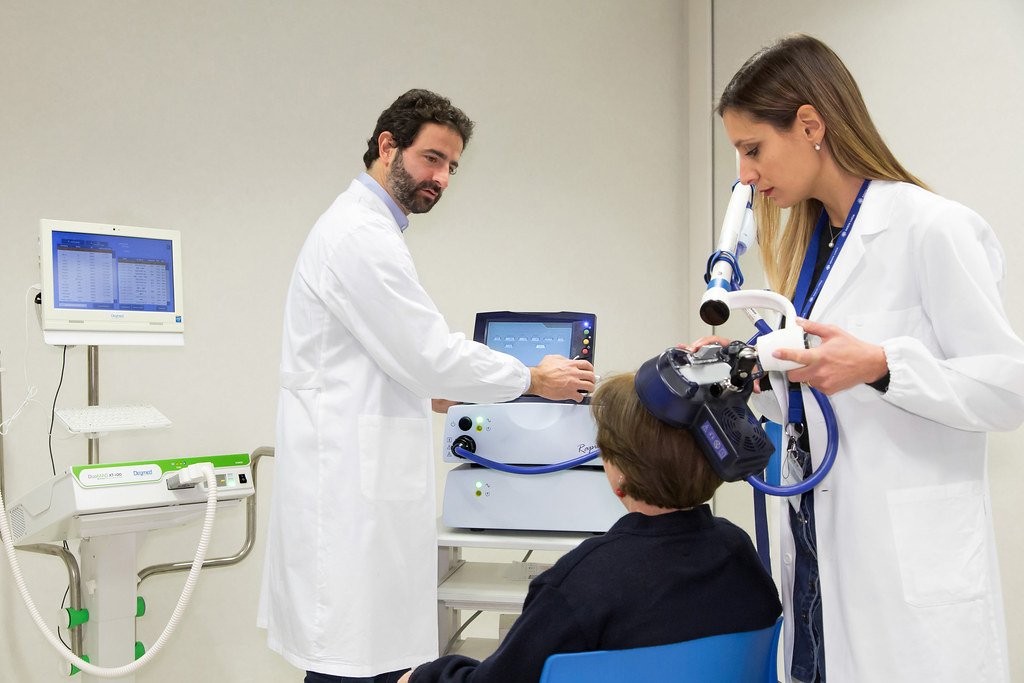Introduction
Depression is a debilitating condition that affects millions of people worldwide. Traditional treatments, such as medication and psychotherapy, don’t always provide relief for everyone. Fortunately, advances in medical technology have led to innovative treatments like Transcranial Magnetic Stimulation (TMS). Recently, a new variation called accelerated TMS (aTMS) has emerged, offering a faster and potentially more effective solution for those struggling with severe depression. This blog post will provide an overview of aTMS, its benefits, and what patients can expect from this treatment.
What is TMS?
An individual getting TMS treatment in a medical setting.
Transcranial Magnetic Stimulation (TMS) is a non-invasive procedure that uses magnetic fields to stimulate nerve cells in the brain. It’s primarily used to treat patients with depression who haven’t responded well to other treatments. Traditional TMS involves daily sessions over several weeks, during which a magnetic coil placed on the scalp sends pulses to the brain regions involved in mood regulation.
Understanding Treatment-Resistant Depression
Treatment-resistant depression (TRD) is a term used to describe cases of major depressive disorder (MDD) that do not respond to at least two different antidepressant treatments of adequate dose and duration. Patients with TRD often experience severe and persistent symptoms, significantly impacting their quality of life. Traditional therapies, such as medications and psychotherapy, may not provide sufficient relief, necessitating alternative approaches like TMS (MentalHealthDaily) (McLean Hospital).
Understanding Accelerated TMS
Accelerated TMS (aTMS) takes the principles of traditional TMS and intensifies the treatment schedule. Instead of one session per day, aTMS involves multiple sessions each day, usually over the course of a week. For example, Stanford's accelerated intelligent neuromodulation therapy (SAINT) protocol administers 10 sessions a day for five days (Stanford Medicine) (Stanford Medicine).
Advantages of Accelerated TMS
Speed: One of the biggest advantages of aTMS is the rapid relief it offers. Traditional TMS can take weeks to show results, but aTMS often shows significant improvements within days (Stanford Medicine).
Efficacy: Studies have shown that aTMS can be as effective as traditional TMS, with some research indicating higher remission rates for treatment-resistant depression. In one study, 79% of participants achieved remission after aTMS (Stanford Medicine).
Convenience: With the shorter treatment duration, aTMS can be more convenient for patients, reducing the need for prolonged time off work or other daily activities (McLean Hospital).
Clinical Evidence and Research
Research has demonstrated the efficacy of aTMS in treating severe depression. A meta-analysis of multiple studies revealed significant reductions in depression scores following aTMS treatment, with some modalities showing long-term maintenance effects (MentalHealthDaily). Another study at Stanford showed that nearly 80% of participants experienced rapid remission, with sustained benefits for months after treatment (Stanford Medicine).
Conditions Treated with Accelerated TMS
While aTMS is primarily used to treat major depressive disorder, it is also being explored for other conditions such as:
Anxiety disorders
Post-Traumatic Stress Disorder (PTSD)
Obsessive-Compulsive Disorder (OCD) (Inspire TMS)
If you would like to participate in a clinical trial for aTMS, Stanford is actively recruiting participants with a variety of mental health conditions at: https://bsl.stanford.edu/for-patients/
How Accelerated TMS is Accomplished
Accelerated TMS is achieved through a highly individualized approach that includes additional imaging to customize the treatment. Here’s how it works:
MRI Scanning: Before starting aTMS, patients undergo a magnetic resonance imaging (MRI) scan. This imaging technique helps to precisely locate the areas of the brain that will be targeted during treatment. (Stanford Medicine).
Target Identification: The MRI scan identifies the specific regions of the brain associated with mood regulation, such as the dorsolateral prefrontal cortex. These regions are crucial in modulating symptoms of depression. (McLean Hospital).
Personalized Stimulation: The identified target areas are then stimulated using magnetic pulses. The intensity and location of the pulses are customized based on each patient’s unique brain anatomy and connectivity patterns. (Stanford Medicine).
Treatment Sessions: Multiple sessions are conducted each day, with each session lasting about 10 minutes. There are typically short breaks between sessions, and the entire daily treatment schedule can last several hours. (Inspire TMS).
Procedure and Experience
The aTMS procedure involves several short sessions each day. Here’s what you can typically expect:
Preparation: Before starting, patients undergo an MRI to identify the precise areas of the brain to target.
Sessions: Each session lasts about 10 minutes, with multiple sessions spaced throughout the day.
Side Effects: Common side effects include mild headaches and temporary fatigue. Unlike some medications, aTMS has no systemic side effects and does not require sedation (Inspire TMS) (McLean Hospital).
Availability and Accessibility
Accelerated TMS is becoming more widely available at specialized clinics and hospitals. It’s important to check if your insurance covers the treatment, as coverage can vary. Institutions like McLean Hospital and Stanford Medicine are leading the way in providing this innovative therapy (McLean Hospital).
Frequently Asked Questions (FAQs)
1. What is accelerated TMS? Accelerated TMS is a variation of traditional TMS that involves multiple treatment sessions per day over a shorter period. This approach aims to provide faster relief from depression symptoms.
2. How effective is accelerated TMS compared to traditional TMS? Studies have shown that aTMS can be as effective, if not more so, than traditional TMS. For instance, nearly 80% of participants in a Stanford study achieved remission within days (Stanford Medicine) (Stanford Medicine).
3. How long does the treatment take? aTMS typically involves multiple sessions per day for about five days, significantly reducing the overall treatment duration compared to traditional TMS, which can take several weeks (McLean Hospital).
4. Are there any side effects? Common side effects of aTMS include mild headaches and temporary fatigue. There are no systemic side effects, and patients do not require sedation during the procedure (Inspire TMS) (McLean Hospital).
5. Who is a good candidate for aTMS? aTMS is generally recommended for patients with major depressive disorder who have not responded to traditional treatments like medication and psychotherapy. It is also being explored for other conditions such as anxiety, PTSD, and OCD (Inspire TMS).
6. Is aTMS covered by insurance? Insurance coverage for aTMS can vary. It’s important to check with your insurance provider and the treatment facility to determine if the procedure is covered under your plan (McLean Hospital).
7. How do I find a treatment center that offers aTMS? Accelerated TMS is available at specialized clinics and hospitals like Stanford Medicine and McLean Hospital (McLean Hospital).
Conclusion
Accelerated TMS represents a significant advancement in the treatment of depression, offering rapid and effective relief for those who have not benefited from traditional therapies. If you or a loved one is struggling with depression, consider discussing aTMS with a healthcare provider to see if it might be a suitable option.
For more detailed information and patient stories, check out the latest research from Stanford Medicine and McLean Hospital.
References
Stanford Medicine: Stanford News Center
McLean Hospital: McLean News
MentalHealthDaily: Accelerated TMS Review
Inspire TMS Denver: aTMS Information


